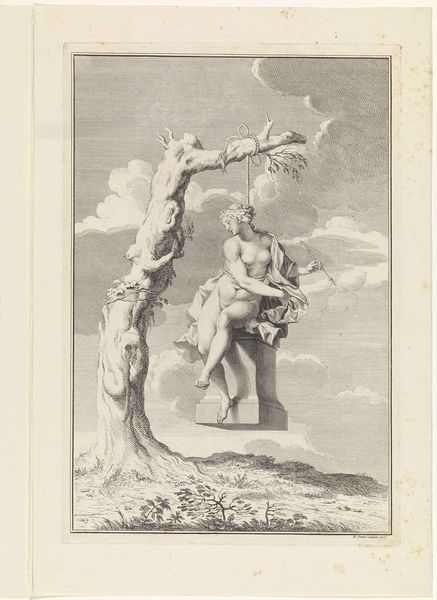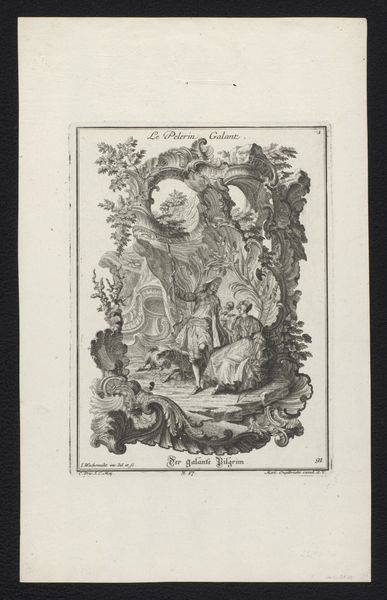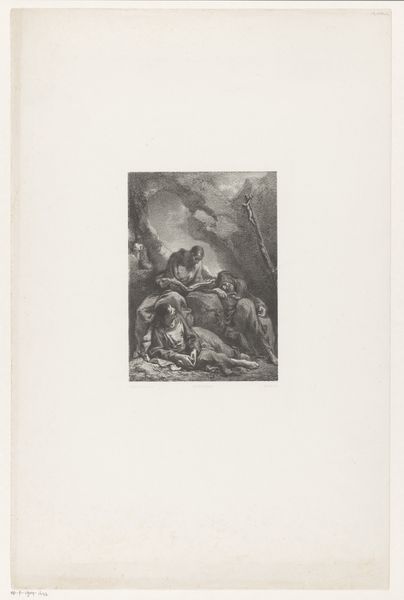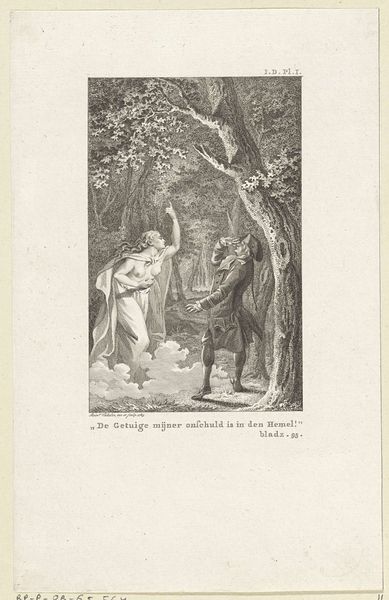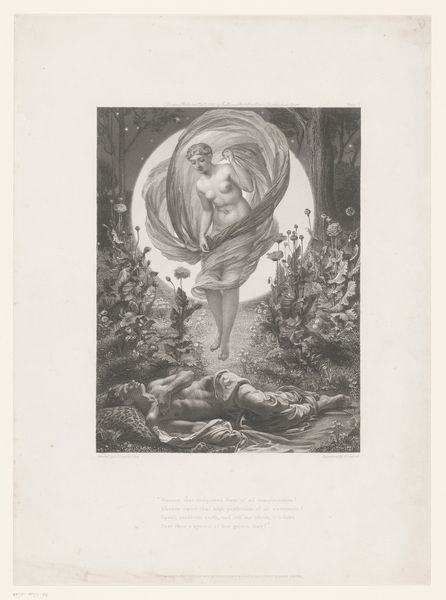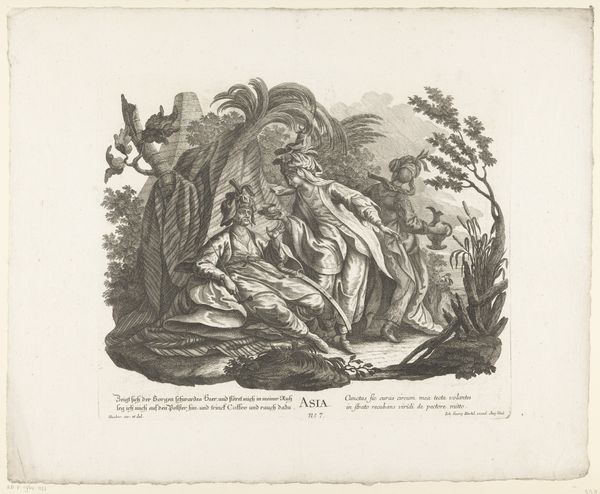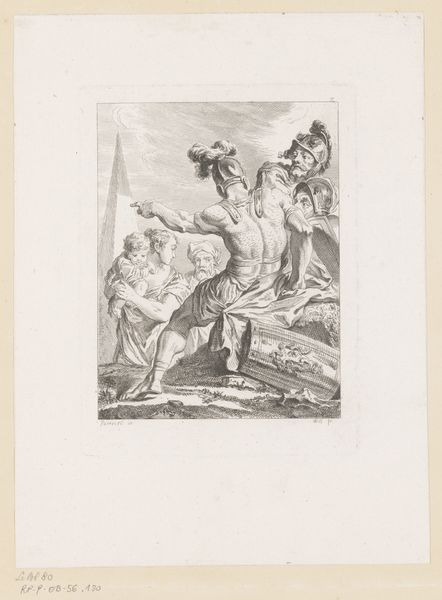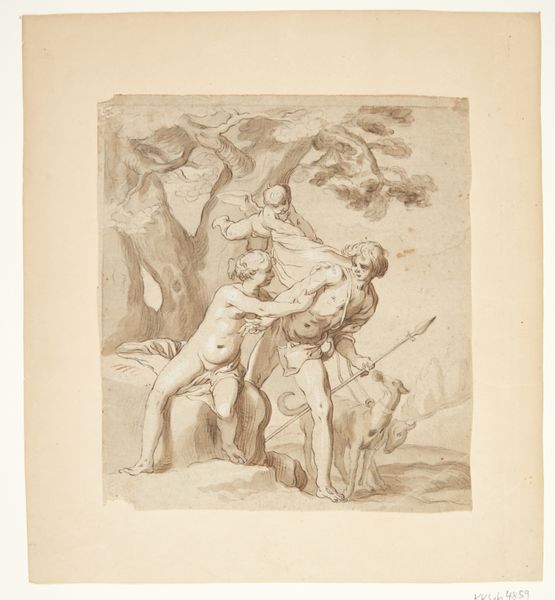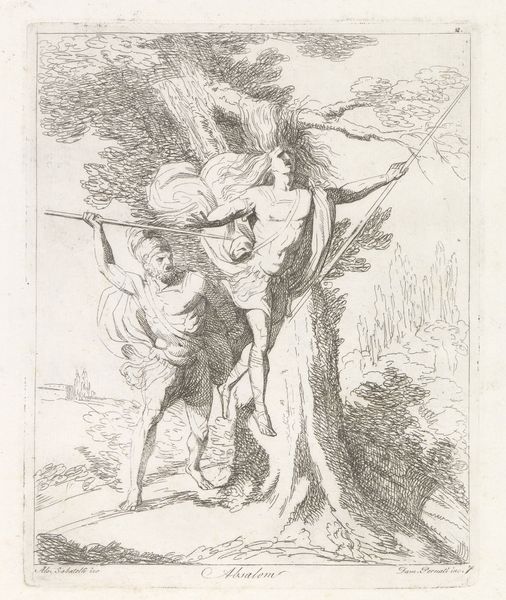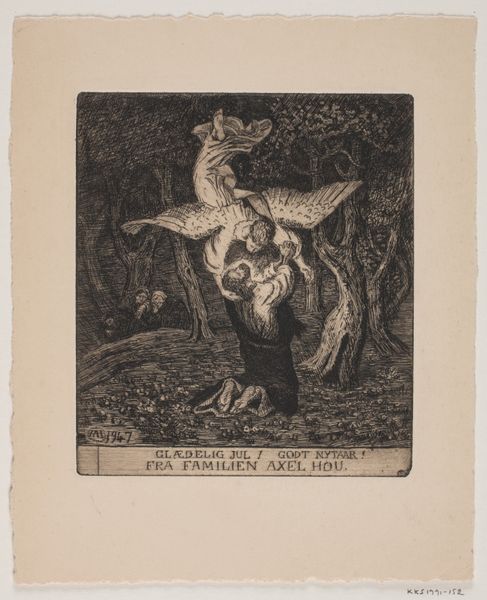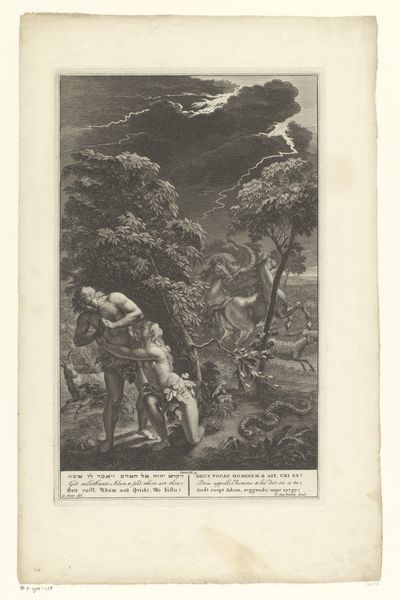
print, engraving
#
portrait
#
baroque
# print
#
old engraving style
#
figuration
#
line
#
history-painting
#
nude
#
engraving
Dimensions: height 176 mm, width 119 mm
Copyright: Rijks Museum: Open Domain
Curator: This compelling piece before us is a depiction of "Saint Sebastian," created sometime between 1623 and 1664, and it's attributed to François Chauveau. This engraving is part of the Rijksmuseum's collection. Editor: Immediately, I'm struck by the tension in this figure. He's obviously suffering, pierced by arrows, but there's also a strange, almost elegant, pose. Curator: It's intriguing, isn't it? Chauveau has chosen engraving, a meticulous printmaking technique. Consider the sheer labor involved in creating the network of lines that give the image form and tone. Look at the varied line weights—thin scratches for background shading, bolder gouges to define muscle. The consumption of time and skill is embedded within this work. Editor: The historical context is crucial. Saint Sebastian was often depicted during periods of plague because he was invoked for protection against disease. It seems that the public display of his suffering body was a way to grapple with broader anxieties about mortality and the vulnerability of the body politic. Curator: Absolutely. The printing process also makes it endlessly reproducible. How does the image and the potential for its multiplication shift our understanding of devotional imagery? This could have been for personal devotion, a book illustration, or part of a larger series. The possibilities point towards the commodification of religious imagery. Editor: And that access also changes how people engage with these stories. Seeing the physical vulnerability of a saint perhaps created a sense of intimacy, bridging the gap between the divine and the everyday concerns of Chauveau's contemporary viewers. Curator: Seeing how a print is created from an incised block complicates our common notions of original work. Are there social repercussions on artistry from a multiplication potential? Editor: This has been really valuable. Thinking about this work as a cultural object, it highlights not only the artist's skill and the subject's meaning but also how anxieties and power dynamics of the era play out on a printed page. Curator: Indeed, by exploring both the material making and the possible uses for it we begin to question art, consumption, and creation.
Comments
No comments
Be the first to comment and join the conversation on the ultimate creative platform.
